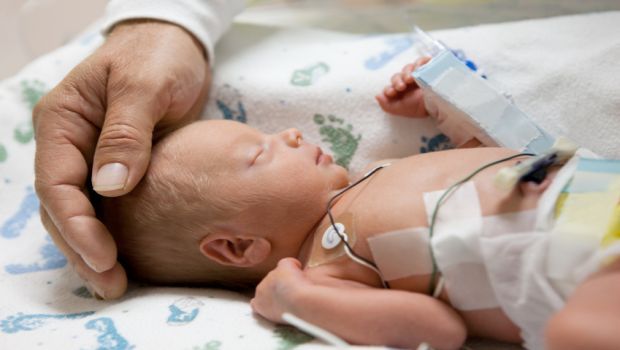Guidance for Preventing C. difficile in Neonatal Intensive Care

Newborns require special diagnosis and treatment considerations for an infectious diarrhea known as Clostridioides difficile (C. difficile) infection, according to a new evidence-based whitepaper published today in Infection Control & Hospital Epidemiology, the journal of the Society for Healthcare Epidemiology of America. The publication is in conjunction with the release of a companion review by the Centers for Disease Control and Prevention’s Healthcare Infection Control Practices Advisory Committee (HICPAC) and recommends against routine testing for C. difficile in neonatal patients and suggests evaluating first for more common causes of diarrhea.
C. difficile infections are one of the most common healthcare-associated infections, but are rarely identified in patients less than a year old because of protective factors in the digestive systems of infants that resist the effects of its toxins. This means lab tests for C. difficile in infants are difficult to interpret since many infants may show evidence of the bacteria with no symptoms.
“Few data exist to guide frontline clinicians about prevention of C. difficile in this vulnerable population,” said Thomas Sandora, MD, MPH, lead author of the white paper and a pediatric infectious diseases physician at Boston Children’s Hospital. “This white paper is the first of a planned series of reports that will synthesize the latest and best research in infection prevention to ensure we are providing care based on the most current information and expert opinion.”
The whitepaper also provides practical, expert opinion-based answers to frequently asked questions on C. difficile detection and prevention in the neonatal intensive care unit (NICU). The question-and-answer format addresses hand hygiene, contact precautions, as well as cleaning and disinfection in the NICU.
According to the authors, antibiotic stewardship-coordinated programs to improve appropriate use of these drugs-has shown a beneficial impact on adverse events seen in the NICU and should be continued even though there is no specific evidence on the impact of stewardship on C. difficile infections for neonatal patients.
Future releases will address Staphylococcus aureus (“staph” infections); respiratory infections; and central line-associated bloodstream infections (CLABSI).
Reference: Thomas J. Sandora MD, MPH; Kristina K. Bryant MD, Joseph B. Cantey MD, Alexis M. Elward MD, MPH, Deborah S. Yokoe MD, MPH, and Allison H. Bartlett MD, MS. “SHEA neonatal intensive care unit (NICU) white paper series: Practical approaches to Clostridioides difficile prevention.” Web (August 30, 2018).
Source: Society for Healthcare Epidemiology of America (SHEA)